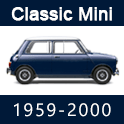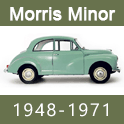Installation

Created: November 15, 2017
Position, adjust, & secure, your MINI Cooper or MINI Cooper S new front suspension/strut brace with these instructions. This brace will clear the JCW cold air intake. Call Mini Mania now for expert advice! Fits 07-13 R56 MINI Cooper & S Hardtop, 08-14 R55 MINI Cooper & S Clubman, 09-15 R57 MINI Cooper & S Convertible

Created: March 29, 2016
The Mini Cooper Rear Sway Bar or more accurately, the 'rear anti-sway bar' is the rear suspension component that connects between the rear suspension and chassis. Its primary purpose is to reduce the body roll as you enter a corner so your Mini can carry higher speeds through the corner.

Created: March 09, 2016
Mini Cooper Rear Adjustable Control Arms - when you need them, what to look for, and what is available. See why you need rear adjustable

Created: January 22, 2016
Performance Coilover products from KW Automotive for any MINI! For many years, KW automotive GmbH is the epitome for premium products in car tuning and automobile refinement.

Created: December 24, 2015
Read about Mini Cooper products from Bilstein. BILSTEIN has been closely associated with high tech in the field of suspension design, driving comfort and safety.

Created: February 22, 2013
MINI Cooper Rear Sway Bar can be easy to install with good instructions- ask the pros at MiniMania.com

Created: February 22, 2013
NM Engineering’s Premium FRONT Adjustable Sway Bar End Links or Drop Links provides these benefits:
* Direct transmission of suspension movements to the sway bar
* Can eliminate sway bar pre-loading to compensate for poorly manufactured sway bars




